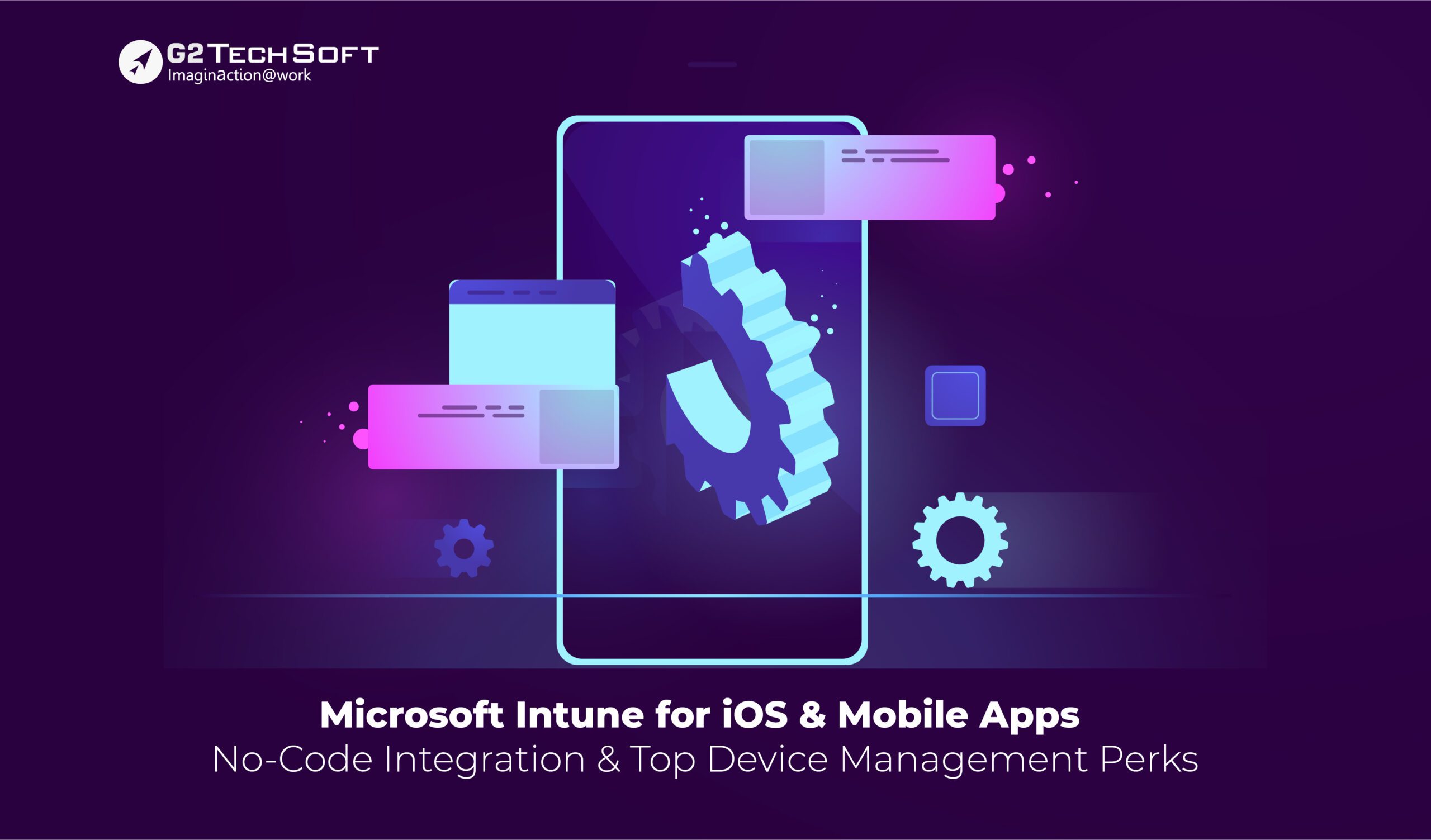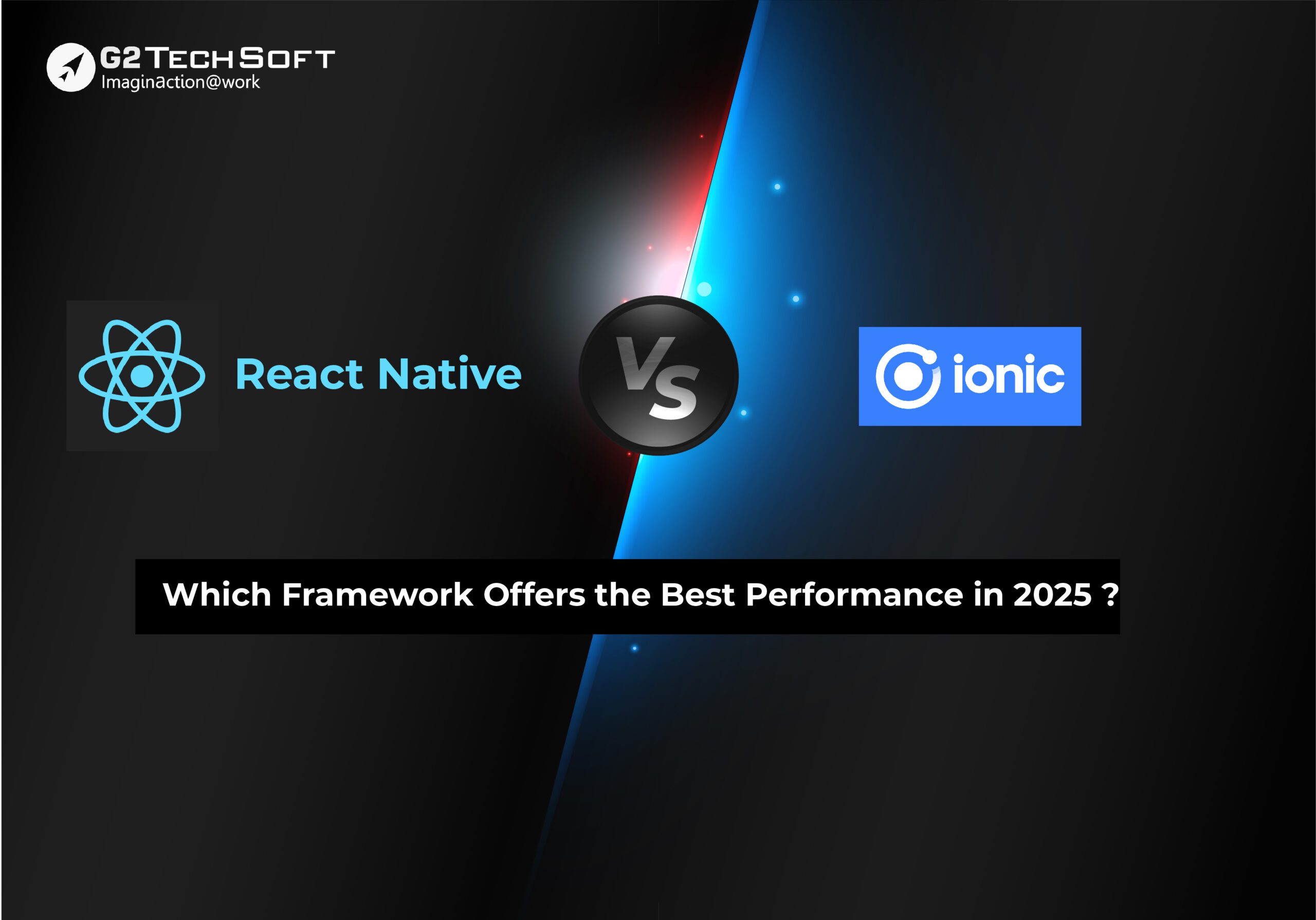
Microsoft Intune for iOS And Mobile Apps: No-Code Integration & Top Device Management Perks
Introduction:
In a mobile-driven business landscape, securing and managing mobile devices and applications is critical to ensuring data protection, compliance, and productivity.
Microsoft Intune, a leading cloud-based solution, offers robust tools for mobile device management (MDM) and mobile app management (MAM), enabling organizations to safeguard their corporate resources while enhancing the user experience.
With the increasing adoption of iOS devices in workplaces, integrating Intune with iOS apps has become essential for maintaining security and streamlining operations.
This blog explores Microsoft Intune’s role in mobile security and its benefits for iOS apps through No-Code Integration. It highlights key device management perks, enhancing security, compliance, and productivity. Lastly, we discuss how app development services aid in seamless Intune integration for businesses.
Microsoft Intune – An Overview:
Key Functionalities Of Microsoft Intune:
Microsoft Intune is a comprehensive platform designed to manage devices and applications securely. Its core functionalities include:
- Mobile Device Management (MDM): Enables IT administrators to manage device configurations, enforce security policies, and remotely wipe devices when necessary.
- Mobile App Management (MAM): Focuses on securing corporate data within apps by controlling app configurations, enforcing data encryption, and enabling remote wipe of app data.
- Conditional Access: Ensures only trusted users, devices, and apps can access company resources.
- Compliance Policies: Allows organizations to define security standards that devices must meet to access corporate resources.
- Integration With Microsoft 365: Seamlessly connects with Microsoft 365 services like Azure Active Directory for unified management.
Difference Between MDM And MAM:
While both MDM and MAM are crucial components of mobile security, they address different aspects of device and application management:
MDM (Mobile Device Management): Concentrates on managing the entire device. IT administrators can control device settings, enforce security policies, and remotely wipe the entire device if necessary. MDM is typically used for corporate-owned devices where the organization has full control.
MAM (Mobile App Management): Focuses on managing and securing individual applications. IT administrators can control app configurations, enforce data encryption, and remotely wipe app data without affecting the entire device. MAM is particularly useful for bring-your-own-device (BYOD) scenarios where employees use personal devices to access corporate resources.
Why iOS Apps Need Intune For Security And Compliance?
iOS devices are widely used in workplaces due to their reliability and user-friendly interface. However, they are also vulnerable to security threats. Integrating Microsoft Intune with iOS apps is essential for:
- Data Protection: Prevents unauthorized access to sensitive corporate information.
- Regulatory Compliance: Helps meet industry-specific standards like HIPAA in healthcare or GDPR in finance.
- Threat Mitigation: Reduces risks from malware, phishing attacks, and data breaches.
- BYOD Security: Protects corporate data on personal devices without compromising user privacy.
No-Code Integration Of Microsoft Intune With iOS Apps:
What is No-Code Integration?
No-Code Integration refers to connecting software systems without requiring custom coding. It simplifies the process by using visual interfaces and pre-built tools. For Microsoft Intune Integration, no-code solutions allow organizations to add MAM capabilities to their iOS apps quickly and efficiently.
Tools And Methods Available For No-Code Intune Integration:
Several tools make no-code integration with Intune seamless:
1. TECHOM Systems:
It offers a no-code solution to implement the Intune App SDK into mobile apps instantly. This solution works even with frameworks like React Native, which the Intune App SDK doesn’t directly support. It provides a uniform implementation across all apps without needing access to source code.
2. App Wrapping:
Some third-party vendors offer app wrapping services that allow you to add Intune MAM capabilities to your iOS apps without modifying the source code. The app wrapper encapsulates the app and adds the necessary Intune SDK components.
3. Configuration Tools:
Microsoft Intune provides configuration tools that allow you to define app policies, configure conditional access, and manage app settings without writing code.
Step-by-Step Guide To No-Code Integration:
Here’s how businesses can integrate Microsoft Intune MAM with iOS apps using no-code solutions:
1. Select A No-Code Platform: Choose a tool like Appdome or Microsoft’s configurator based on your app requirements.
2. Upload Your App Binary: Provide your app’s IPA file to the platform.
3. Configure Policies: Define MAM policies such as data encryption or conditional access using the platform’s interface.
4. Build Your App: Apply the integration by clicking “Build My App” or running automated scripts.
5. Test The App: Ensure all policies are functioning correctly before deployment.
6. Deploy The App: Distribute the integrated app through Microsoft’s Company Portal or other channels.
Benefits Of Using No-Code Solutions:
No-code solutions offer several advantages:
- Faster Deployment: Reduces integration time from weeks to minutes.
- Ease Of Use: Simplifies complex processes with visual tools.
- Cost Efficiency: Eliminates the need for specialized coding expertise.
- Enhanced Security: Ensures compliance with industry standards using pre-tested components.
10 Top Device Management Perks Of Microsoft Intune:
Microsoft Intune provides unparalleled benefits in managing mobile devices securely. Here are its top 10 perks:
1. Centralized Management: Manage all endpoints—iOS, Android, Windows—from a single console.
2. Enhanced Security Features: Protect data with encryption, conditional access policies, and remote wipe capabilities.
3. Compliance Enforcement: Define policies that ensure devices meet regulatory requirements like GDPR or HIPAA.
4. Application Control: Deploy apps remotely, configure settings, and manage updates effortlessly.
5. Remote Wipe & Lock: Prevent unauthorized access by wiping or locking lost/stolen devices.
6. Automated Updates: Keep devices secure by automating OS patches and app updates.
7. Detailed Reporting: Monitor device compliance, usage statistics, and security incidents in real-time.
8. Integration With Azure AD: Leverage Azure Active Directory for advanced identity management.
9. BYOD Support: Secure corporate data on personal devices without interfering with user privacy.
10. Scalability & Flexibility: Adapt easily to changing organizational needs across industries.
Real-World Use Cases:
Microsoft Intune integration with mobile apps has transformed how businesses operate across various sectors. Here are some real-world examples illustrating the benefits of Microsoft Intune Integration:
Finance:
Scenario: A global investment bank needs to secure its mobile workforce’s access to sensitive financial data.
Solution: The bank implements Microsoft Intune to manage iOS devices used by its employees. Intune enforces encryption policies, requires strong passcodes, and restricts data sharing between corporate and personal apps.
Benefits: The bank ensures that sensitive financial data is protected from unauthorized access, meets regulatory compliance requirements, and enables its employees to work securely from anywhere.
Healthcare:
Scenario: A large hospital network needs to manage and secure mobile devices used by its doctors and nurses to access patient records.
Solution: The hospital implements Microsoft Intune to manage iOS devices used by its medical staff. Intune enforces HIPAA compliance policies, restricts access to patient records based on user roles, and allows remote wipe of devices in case of loss or theft.
Benefits: The hospital ensures that patient data is protected, meets HIPAA compliance requirements, and enables its medical staff to provide quality care from anywhere.
Remote Work:
Scenario: A technology company with a large remote workforce needs to secure its employees’ access to corporate resources on their devices.
Solution: The company implements Microsoft Intune MAM to manage corporate data within apps on employees’ devices. Intune enforces data encryption, prevents data leakage, and allows remote wipe of app data without affecting the entire device.
Benefits: The company enables its remote workforce to access corporate resources securely, protects corporate data from unauthorized access, and maintains employee privacy on their devices.
Conclusion:
Integrating Microsoft Intune with iOS apps is vital for businesses aiming to enhance security, comply with regulations, and improve operational efficiency in today’s digital era. The availability of no-code solutions has made this process faster, easier, and more cost-effective than ever before.
By adopting Microsoft Intune’s robust MDM and MAM capabilities, organizations can protect their corporate resources while empowering employees with secure access across devices, whether they’re working remotely or on-site.
At G2TechSoft, we specialize in providing tailored solutions for integrating Microsoft Intune into your mobile ecosystem seamlessly. Our expertise ensures that your organization benefits from advanced security features while meeting compliance requirements effortlessly.
Contact G2TechSoft today to explore how our app development services can help you leverage Microsoft Intune for your digital transformation journey!



